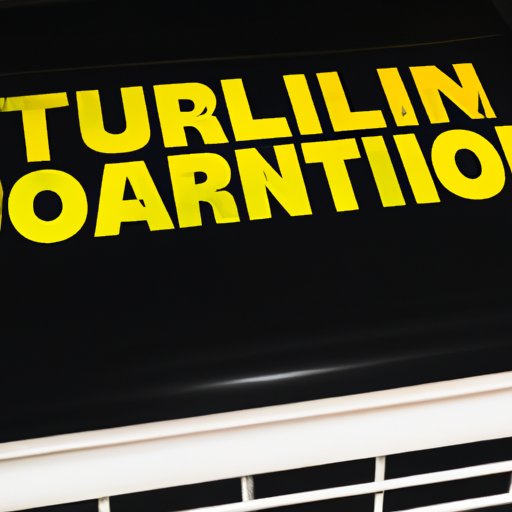Introduction
Tanning beds are becoming increasingly popular, as people look to get that perfect summer glow without having to spend hours out in the sun. But are these tanning beds really as harmless as they seem? In this article, we’ll take an in-depth look at the pros and cons of tanning beds, and explore the potential health risks associated with their use.
What are Tanning Beds?
Tanning beds, also known as sunbeds or solariums, are devices used to simulate the effects of natural sunlight. Tanning beds produce light by emitting ultraviolet (UV) radiation, which is what causes the skin to darken and tan. There are two types of UV radiation: UVA and UVB. UVA radiation is the most commonly used type of radiation in tanning beds, as it penetrates the skin more deeply than UVB radiation. However, both types of radiation can be harmful if exposed to for too long.
Examining the Pros and Cons of Tanning Beds
On the one hand, tanning beds offer many benefits. They provide a quick and easy way to get a bronzed complexion without having to spend hours in the sun. Tanning beds also allow people to control the amount of UV radiation they are exposed to, making it possible to get a tan without risking sunburn. Finally, some people find tanning beds to be relaxing and stress-relieving.
On the other hand, there are many potential health risks associated with tanning bed use. These risks include an increased risk of skin cancer, eye damage from UV radiation exposure, and premature aging. So, while tanning beds may be convenient, it’s important to understand the potential health risks before using one.

The Dangers of Tanning Bed Use: A Comprehensive Look
When it comes to the dangers of tanning beds, there are three main areas of concern: skin cancer risk, eye damage from tanning, and premature aging.
Skin Cancer Risk
One of the most serious risks associated with tanning bed use is an increased risk of skin cancer. Studies have shown that people who use tanning beds are 75% more likely to develop melanoma, the deadliest form of skin cancer. The risk of melanoma increases with the number of tanning sessions, and those who begin using tanning beds before age 35 are especially at risk.
Eye Damage from Tanning
Another potential danger of tanning beds is eye damage from UV radiation exposure. Ultraviolet radiation can cause a condition known as photokeratitis, which is an inflammation of the cornea that can cause pain, redness, and temporary vision loss. Wearing protective eyewear can help reduce the risk of eye damage from tanning beds.
Premature Aging
Finally, frequent tanning bed use can lead to premature aging. UV radiation can damage the skin’s collagen and elastin, which are responsible for keeping skin firm and elastic. Over time, this can lead to wrinkles, age spots, and other signs of aging.

How to Safely Tan Without a Tanning Bed
If you’re looking to get a tan without using a tanning bed, there are several alternatives available. Self-tanning products, such as lotions, sprays, and gels, can give you a bronzed glow without exposing your skin to UV radiation. Additionally, there are sunless tanning booths that use a combination of airbrush tanning and bronzing lamps to give you a natural-looking tan without any UV exposure.
When spending time outdoors, it’s important to protect your skin from the sun’s harmful rays. Make sure to use sunscreen with an SPF of at least 15 and wear protective clothing, such as hats, sunglasses, and light-colored clothing.
The Risks of Tanning Bed Overuse
It’s important to note that even occasional use of a tanning bed can be dangerous. Frequent or prolonged use of a tanning bed can increase your risk of skin cancer, accelerate the aging process, and suppress your immune system. Additionally, people with certain skin types, such as fair skin, are more vulnerable to the damaging effects of UV radiation.

Understanding the Health Hazards Associated with Tanning Beds
UV radiation exposure is the primary health hazard associated with tanning beds. UV radiation is a form of energy that is invisible to the human eye, but can cause significant damage to the skin and eyes. Prolonged exposure to UV radiation can lead to an increased risk of skin cancer, premature aging, and eye damage.
Another potential health hazard associated with tanning beds is immune system suppression. UV radiation can weaken the body’s immune system, making it more vulnerable to infection and disease.
Conclusion
Tanning beds may seem like a convenient way to get a golden tan without spending hours in the sun, but there are many potential health risks associated with their use. Exposure to UV radiation can increase the risk of skin cancer, cause premature aging, and weaken the immune system. It’s important to understand the potential health hazards associated with tanning beds before using one. If you’re looking to get a tan, there are safer alternatives available, such as self-tanning products and sunless tanning booths.


